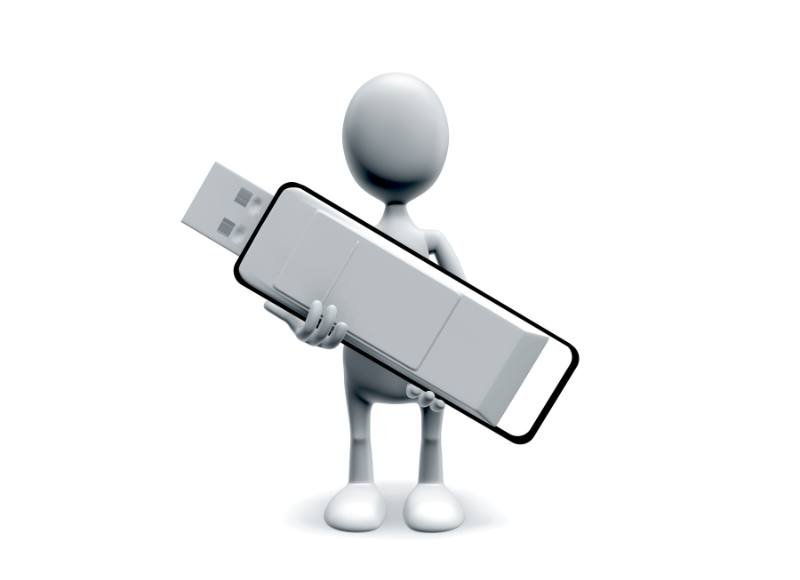Why you Should Never Pick up a Flash Drive from the Street or a Wall?
Adina Anderson
. 6 min read
A moment of your time, please. Don't touch this if you discover it in the wall. No, really. Memory sticks, gigasticks, keys, and drives all mean the same thing. Drive in, jump, and thumb drives all refer to the same thing. One that can be plugged into a computer's USB port. Maybe not even the drive-in. Who among us hasn't had one of these really useful gadgets at some point? They can store up to 2 terabytes of data, normally weigh less than an ounce, and can be carried about in a pocket. So, thanks to the ingenuity and expertise of developers, we can enjoy the convenience and durability of these compact storage devices that have become an integral part of our digital lives.

Exploring Dead Drops and Their Risks
You won't know for sure until you check, but it's probably not a good idea
Watch this video to learn why you should never, ever pick up a flash drive from the side of the road or a wall. But before we begin, don't forget to subscribe to the upbeat channel where you'll discover many more movies exactly like this one, covering every topic imaginable.
Don't be baffled
If you happen to be strolling down the street and see a flash drive protruding from the sidewalk or a building. Dead drops are what you've probably found. Despite its sinister moniker, this is really an international art project that has taken inspiration from the secretive practices of spies and saboteurs. See, back in the day, agents of the secret service devised their own means of communicating sensitive information. Spies sometimes met face to face via a live drop, although such occasions were rare.
That's why the "dead drop" was developed
It wasn't here when the term "drop dead" was first used. At this time, spies would hide crucial papers in obscure locations, such as between loose bricks in a wall. Berlin-based artist Aram Parthale, who was apparently inspired by this old espionage gadget, set out to establish a public, offline, peer-to-peer sharing network. By concealing memory sticks in various locations, Aaron's Death Drop Project facilitates the anonymous transfer of sensitive data.
A curb or a wall
The dead drop database contains the locations of all the projects' flash drives, making it easy to go out and hunt for one. After locating one, you are free to alter it in any way you see appropriate, including erasing its contents, making copies of it, or adding new data. Around 1500 dead drops have now been established all over the world. Unless you're in Antarctica, where there aren't many walls, you can find a dead drop pretty much everywhere.
Total amount of information stored on these flash drives, from Iceland to New Zealand, is 10 terabytes
Those who desire to engage in covert activities and discover their surroundings are drawn to dead drops, despite the fact that it is difficult to remain undetected in such places. Whoa, that's quite a sight. In spite of everything, people still like a good challenge. Hold on, where exactly are you going to go off to first engage in your frenzied pursuit of exciting new experiences and insightful information? Do not jump to conclusions. How come you haven't heard any of the criticisms levelled at the dormant project yet?
Therefore, although taking certain chances is expected and even encouraged
Be sure you wish to play before installing any games by installing a top-tier antivirus application. Second, you have no idea what kind of data may be on a flash drive. Videos, images, and texts may be downloaded by anybody, and this has already caused issues. One German journalist, for instance, uncovered a dead drop including instructions for producing an unspecified illicit narcotic and many lethal poison concoctions.
However the directions on how to make a bomb were the most perilous item he uncovered
The answer is yes, of course. Were there inquiries from the police? As it turned out, whomever placed all that potentially harmful data on the USB stick was just being pranksters. It's impossible to say what kind of disaster may be lurking on the next USB stick. Don't rush into something before giving it some serious thought. There may be some USB sticks implanted in walls that are just somewhat dangerous, but there are plenty other flash drives lying about that pose a serious threat to your privacy and financial security.
Modern con artists may wreck your life in a number of ways with nothing more complicated
The memory sticks were misplaced. We always remind our children not to steal things from strangers, yet as adults, we don't think twice about picking up a misplaced memory stick and taking it with us. Really, now. A 2016 research found that almost all (298 out of 297) lost flash drives were recovered, and almost half (45%) were actually used.
What kind of risk may a little flash drive pose?
The potential repercussions are so catastrophic that you can't even fathom them. Your passwords, social security number, and other sensitive information are all at risk if criminals get access to your computer. However, they might easily cause damage to your machine. USB assaults have affected even the largest of companies. Stuxnet was one of the most stunning instances. The virus spread via a misplaced USB drive and infected all of the software at several Iranian manufacturing facilities. This assault reached as far as a facility that enriches uranium.
False feedback signals were delivered by this infection, making detection difficult or impossible
A killer USB justification for avoiding plugging random objects from the street into your computer. A firm in Hong Kong has developed a flash drive capable of destroying a computer completely. It takes in enough juice from the USB cord to power itself until the voltage hits 240 V. The data connections in your computer receive this energy and become so overloaded that your machine dies a quick and painful death. However, it's a common misconception that only the very wealthy can afford such a lethal hobby.
Cybercriminals in Australia are increasingly using this strategy, according to the police
They sneak memory sticks into mails without labels. It should come as no surprise that these gadgets harbor spyware that may severely damage your PC. In all candor, it seems that these con artists gain by preying on people's natural curiosity. The recipients of this present can't resist opening it to see what's inside. Hence, over 50% of USB sticks received in the mail are really used. When a computer is infected with malware, it might lose data and applications, or a media provider can begin advertising its services.
This is not only an act of violence against one person
Of of fifteen government entities in Western Australia, eight failed a USB stick security exercise performed by the Auditor General. Employees carelessly inserting USB drives they get in the mail onto company computers was to blame. The worst part is that these potentially malicious flash devices might readily penetrate the agency's computer systems. If you get an unmarked USB drive in the mail, remember that it came from a government agency, and destroy it as thoroughly as possible before discarding it.
Is the eBay flash drive fraud still going on?
Be wary of any internet ad offering a 1 TB memory stick for an absurdly low price. Don't give them your money; it's probably a fraud. The Chinese hacking community has recently begun using this strategy. If you take advantage of this amazing offer, you will get a counterfeit flash drive.
These crackers have found a method to modify the control system
With these modifications, the USB stick will seem to have a far larger storage capacity than the eight, sixteen, thirty-two or more gigabytes that it really has. This sleight of hand comes with a second catch, though. The new flash drive should function normally so long as its storage capacity is not exceeded. At first glance, your files and folders will seem to be in good order, but upon further inspection, you will notice that the vast majority of them have been deleted, never to be recovered.
Conclusion
The article warns against picking up random flash drives from the street or walls due to the potential risks associated with them. The author explains that dead drops, an international art project that facilitates the anonymous transfer of sensitive data, may be found in various locations, including flash drives embedded in walls. However, the potential dangers of these devices are significant, including the risk of downloading harmful data, theft of personal and sensitive information, and even the destruction of a computer. The article concludes by urging readers to exercise caution when dealing with unknown flash drives and to consider the potential risks carefully.
More Stories from
Smart Cities: Innovations and Challenges in Creating Sustainable Urban Environments
Discover the future of urban living in this article on smart cities. Explore the innovations driving sustainable and efficient urban environments, from smart transportation to renewable energy management.
Failure as a Service: Unleashing the Power of Failure for Software System Enhancement
It highlights that not all defects result in failures and discusses additional factors like environmental conditions and human errors that can contribute to failures.
International Telecommunication Union (ITU): Bridging the Global Digital Divide
The International Telecommunication Union (ITU) is a specialized agency of the United Nations, dedicated to promoting global connectivity.
Illuminating the Future: A Comprehensive Guide to Light Emitting Diodes (LEDs)
Discover the history, working principles, and diverse applications of LEDs, from lighting and displays to automotive advancements.
The World Wide Web: Connecting Humanity Across Time and Space
From its inception by Sir Tim Berners-Lee to its exponential growth, learn how the Web revolutionized communication, commerce, and society at large.
.png?height=40)

.jpg?width=250&aspect_ratio=16:9)







.png?width=40&aspect_ratio=1:1)
